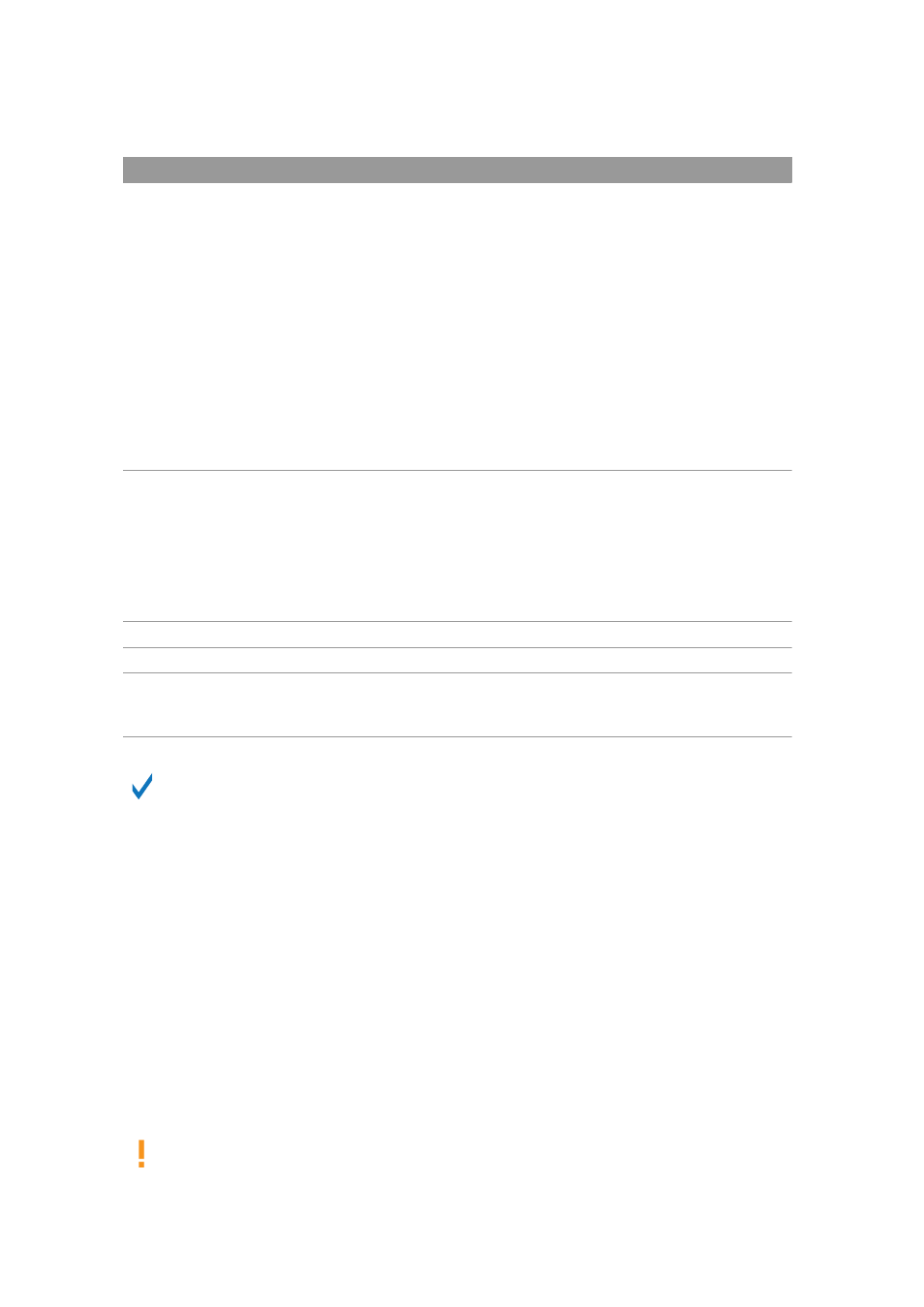Labels for bussing points in the dest. selector – Native Instruments MASCHINE+ Standalone Production and Performance Instrument User Manual
Page 153

Controls
Description
Dest.
Selects where you want to send the main audio output of your channel.
For Sounds, available options are
None
(no output),
Master
,
Group
(parent
Group, default setting), any other Group or any other Sound acting as bussing
point (i.e. containing an Effect Plug-in in its first Plug-in slot), as well as the 16
external stereo outputs
Ext. 1
–
16
.
For Groups, available options are
None
(no output),
Master
(default setting),
any other Group acting as bussing point (i.e. containing an Effect Plug-in in its
first Plug-in slot), any Sound acting as bussing point in any other Group, as well
as the 16 external stereo outputs
Ext. 1
–
16
.
The available bussing points are labeled as described below.
Cue
When
Cue
is enabled, the main output of the channel is sent to the Cue bus
instead of its normal target (defined in
Dest.
, see above). For example, this is
very useful to pre-listen a channel before you mix it in your performance.
Note that when
Cue
is enabled, the channel’s Aux 1 and Aux 2 outputs are
muted as well, but they are not sent to the Cue bus (see
Level
Adjusts the overall volume level of the channel.
Pan
Defines the pan position of the channel in the stereo field.
Audio Mute
(Sounds
only)
If you enable
Audio Mute
, muting this Sound will not only bypass its events but
also mute its audio output, thereby muting any audio tails from notes already
played. See section for more information.
If MASCHINE+ is in Controller mode and the MASCHINE software is running as a plug-in,
the external stereo outputs
Ext.1
–
16
available in the
Dest.
selector of the
MAIN
section
will correspond to virtual outputs in your host. This allows you to send individual Sounds
or Groups from MASCHINE to their own mixer channels within your DAW, for example.
Labels for Bussing Points in the Dest. Selector
The various bussing points available in the
Dest.
selector (described in the table above) are labeled
differently in the drop-down menu and in the display of the selector:
• In the drop-down menu they are labeled as follows:
• For Groups:
[Group name]
(for example,
Drums
).
• For Sounds:
[Group name]: [Sound name]-[input number]
(for example,
Drums: Kick-1
).
• In the selector display they are labeled as follows:
• For Groups:
[Group letter+number]
(e.g.,
A2
).
• For Sounds:
[Group letter+number]:S[Sound number]-[input number]
(for example,
A2:S4-1
for the first input of the Sound 4 of Group A2).
The bussing points available in the
DEST.
parameter are labeled as in the selector display
described above.
AUDIO ROUTING, REMOTE CONTROL, AND MACRO CONTROLS
146
